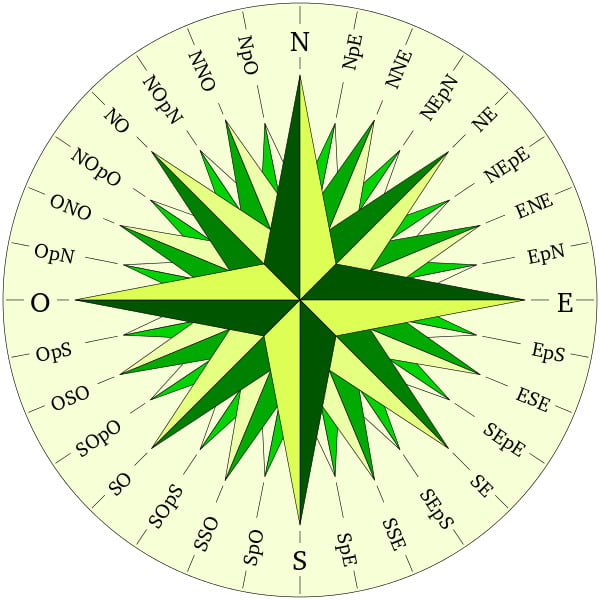Surely you have heard about the Compass Rose on more than one occasion, but you may not know what it is and what it is for. this famous symbol. The truth is that its history is very interesting and, despite the fact that today there are much more modern and precise elements to fulfill its functions, in some cases it is still used.
And the impact of its symbology has been such in the field of maritime navigation, and years later also in aeronautics, that The Compass Rose has spread even beyond the context of transportation. In fact, it is even common to see her starring in countless tattoos, so, without further ado, let's tell you what it consists of.
What exactly is the Compass Rose?
Surely you are familiar with a circular symbol that points to the four cardinal points - north, south, east and west - defining its direction and orientation. Well then, It is the Wind Rose, made up of 4 lateral directions, 8 lateral and 16 co-collateral, and was used for a long time as an essential tool in nautical, until the compass displaced it into the background.
Although it is a practical element, in many cases it is also part of marine aesthetics, which is why it has been represented in multiple ways over time. Nevertheless, On navigation charts it is usually represented with 32 rhombuses that join at their ends., placing the fleur-de-lis as a representation of the north.

Origins of the Compass Rose
Although its first documentation dates back to the beginning of the 15th century -specifically in a navigation chart by the Portuguese Pedro Reinel-, It is estimated that the Wind Rose was created in the 13th century, and is attributed to Ramón Llull. However, the author is also pointed out Pliny the Elder, who describes the symbol in detail in his work titled Natural History as inspiration of the Majorcan missionary, theologian and philosopher.
What is the Compass Rose for?
To understand the usefulness of the Compass Rose it is important to know its divisions, based on the lines that join the four cardinal points, in addition to their bisectors and subdivisions. The latter are known as lateral and collateral respectively, while the lines are called East-West and Meridian in the case of the one that joins the north and south points.
These segments are divided from the center, which is the horizon, and serve to establish the lateral, collateral and co-collateral courses, in addition to identifying the direction and name of the winds based on the direction of origin. Today, and despite having lost prominence in favor of them and the compass, The Compass Rose is part of navigation systems as advanced as VOR, GPS either NDB.
Forms of representation of the Compass Rose
Although its original representation is made up of the four cardinal points, the center as a horizon and the 32 rhombuses that make it up, throughout history - and depending on the needs it intended to cover - The Wind Rose has been represented through different forms or typologies, the following four variants being the main ones.
32-point Compass Rose
The 32-point Compass Rose is the one that has traditionally been used to identify the origin of the winds, which is established in up to 32 different directions of origin, each of them with one or more particular nomenclatures.
16-point wind rose
In this case we are talking about the so-called Wind Rose of medium winds, since it represents the four cardinal points along with the bisectors of the angles of the most common winds. It is less complete than the previous one, but more than sufficient in most navigation situations.
8-point wind rose
This symbol leaves aside the direction of the winds to focus exclusively on the main cardinal points and the four lateral directions, namely: north, south, east, west, northeast, northwest, southeast and southwest.
4-point wind rose
The 4-point Compass Rose is the most basic, known and used, both in navigation and in its cultural representations. It is reminiscent of a traditional compass and only indicates the direction of the four cardinal points - north, south, east and west - without further indications.
The incidence of the Compass Rose today
Currently, The Compass Rose continues to be used in the aeronautics sector, mainly in something as relevant as the identification of the trends and directions of the winds in each place when building and orienting aerodromes and airports. An essential element that remains in force centuries after its invention.




